When it comes to navigating the complexities of life, sometimes we find ourselves in need of a little extra support, especially during difficult times. Requesting compassionate leave can be a sensitive topic, but it's essential to communicate your needs clearly and effectively. In this article, we'll explore a straightforward letter template that can help you seek the compassionate leave you deserve, ensuring your request is respectful and well-articulated. So, if you're looking for guidance on how to write a compassionate leave approval letter, keep reading!

Employee's personal information and position
Compassionate leave is essential for employee welfare, especially during personal crises. Employees seeking such leave must provide personal information including full name, position title (for example, Software Engineer), department (like Information Technology), and employee ID number. This information supports the leave request by confirming the employee's role within the organization and assists in processing the request efficiently. Additionally, a brief explanation of the circumstances necessitating the leave, such as illness in the family or bereavement, can help managers understand the urgency and significance of the request. A supportive workplace culture encourages open communication and prioritizes employee well-being during challenging times.
Reason for compassionate leave request
Compassionate leave requests often arise due to personal circumstances that require immediate attention, such as the death of a close family member or a significant health crisis affecting a loved one. These situations can evoke intense emotional distress, making it essential for individuals to take time off work to cope with grief or provide support. In many organizations, compassionate leave policies are designed to offer employees the necessary time away, ensuring they can manage these challenging periods effectively while also maintaining workplace empathy and support. Documentation may include a death certificate or medical notes, depending on the organization's requirements.
Duration and start date of leave
Compassionate leave, often referred to as bereavement leave, typically allows employees time off to grieve a loss or attend important family matters. The duration of this leave can vary, ranging from a few days to several weeks depending on company policy and individual circumstances. Start dates may differ based on the employee's situation, with some beginning immediately after notification of the event while others may have delayed starts based on funeral arrangements or other personal commitments. This time should be clearly communicated to employers for proper planning and support within the workplace.
Contact information during leave
Compassionate leave is an important provision offered by employers to support employees during challenging times, such as the illness or death of a family member. During this leave, employees are typically required to provide contact information in case of urgent matters related to work. For instance, employees might specify a phone number or email address where they can be reached for critical inquiries. Additionally, some companies may request a designated colleague's name who can handle pressing issues in the employee's absence, ensuring the workflow remains uninterrupted. Clear communication regarding contact availability is essential for maintaining organizational efficiency while demonstrating empathy and understanding towards employees facing personal hardships.
Supervisor's approval and signature
Compassionate leave requests reflect emotional circumstances requiring understanding and support from management. An employee may seek leave for significant events such as loss of a family member or a medical emergency involving a loved one. Approval processes often include supervisor discretion, ensuring policies adhere to company guidelines while providing necessary employee assistance. Proper documentation, like an official leave request form, may be required, along with the supervisor's signature for validation. Clear communication and timely action are essential in these sensitive situations to foster a supportive workplace environment.
Letter Template For Compassionate Leave Approval Samples
Letter template of compassionate leave application for family health issues.
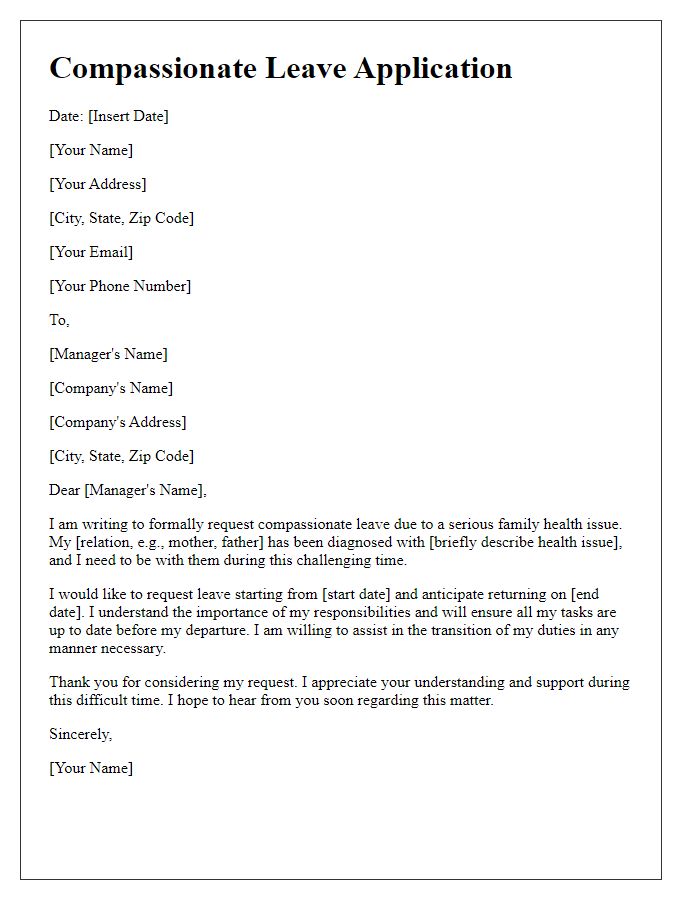
Letter template of compassionate leave notice for caretaking responsibilities.

Letter template of compassionate leave inquiry for unforeseen circumstances.
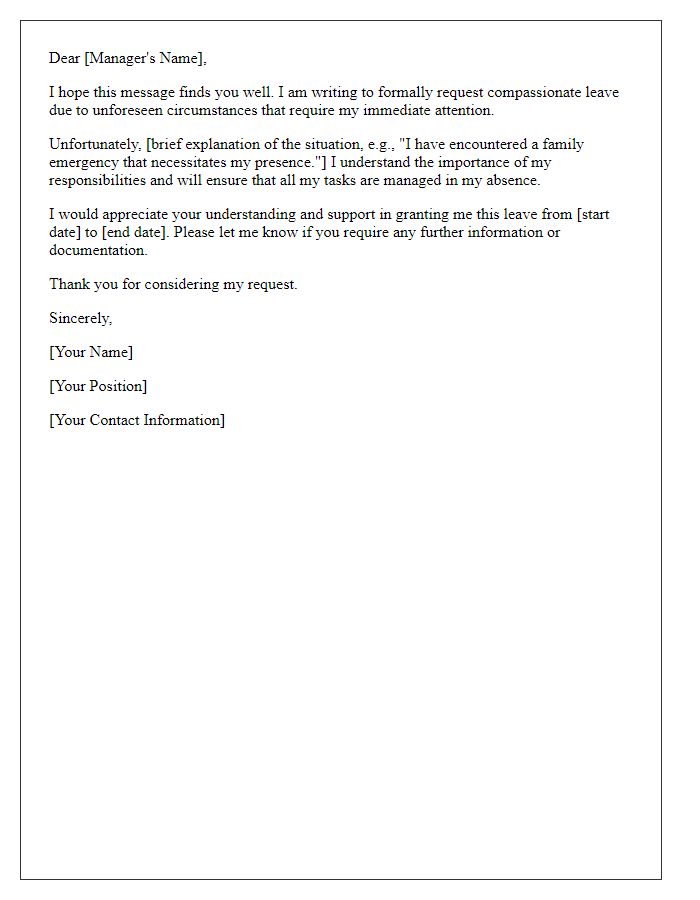
Letter template of compassionate leave justification for emotional support.
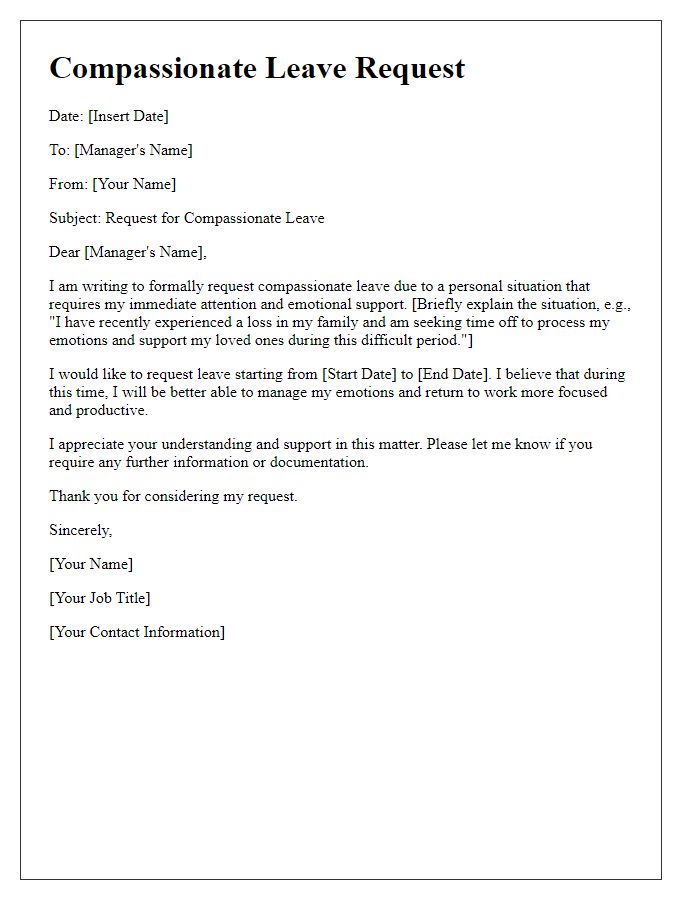
Letter template of compassionate leave documentation for legal obligations.


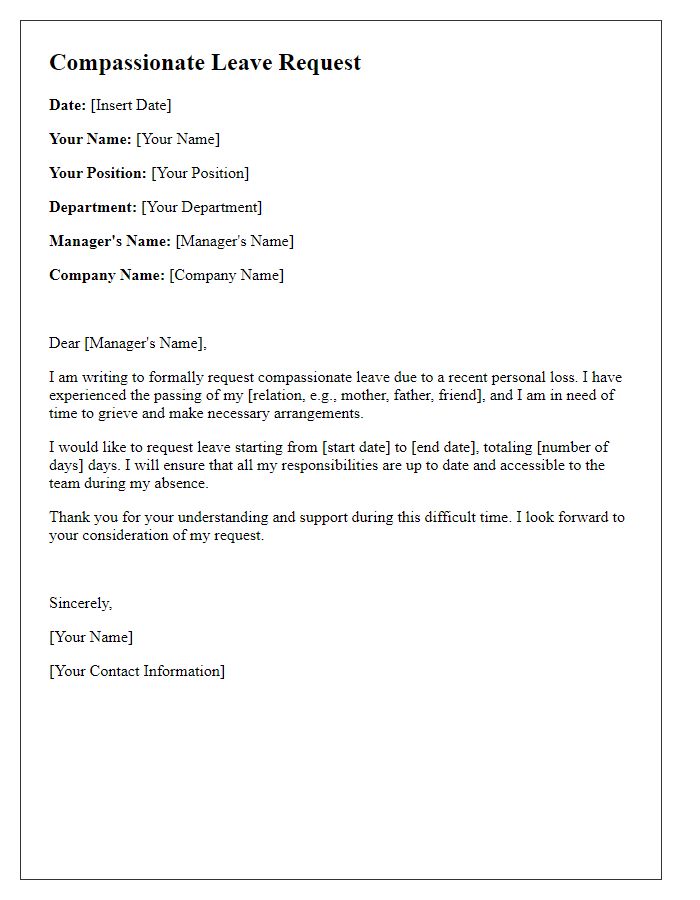
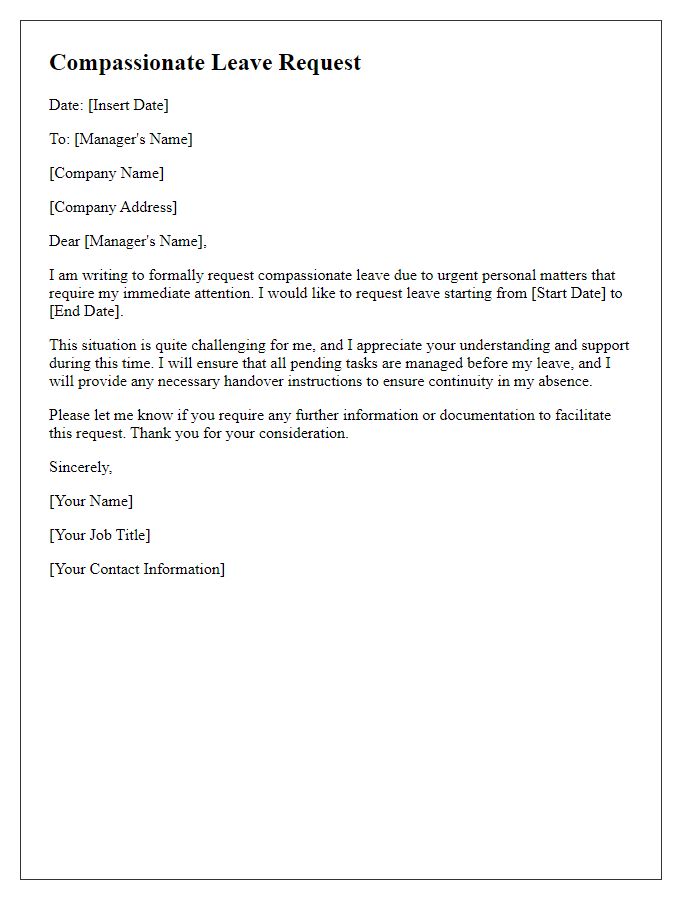
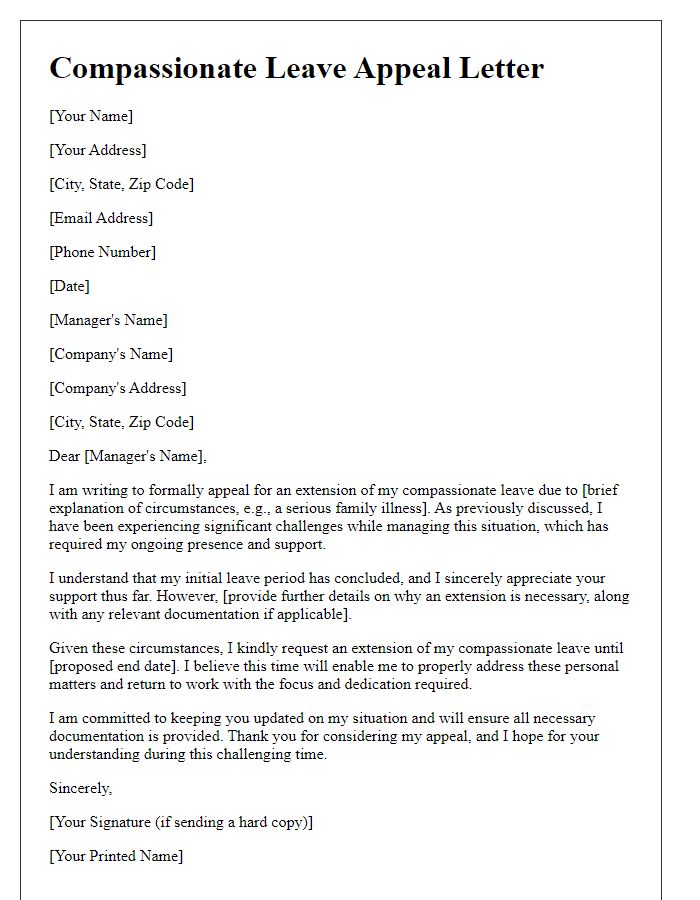
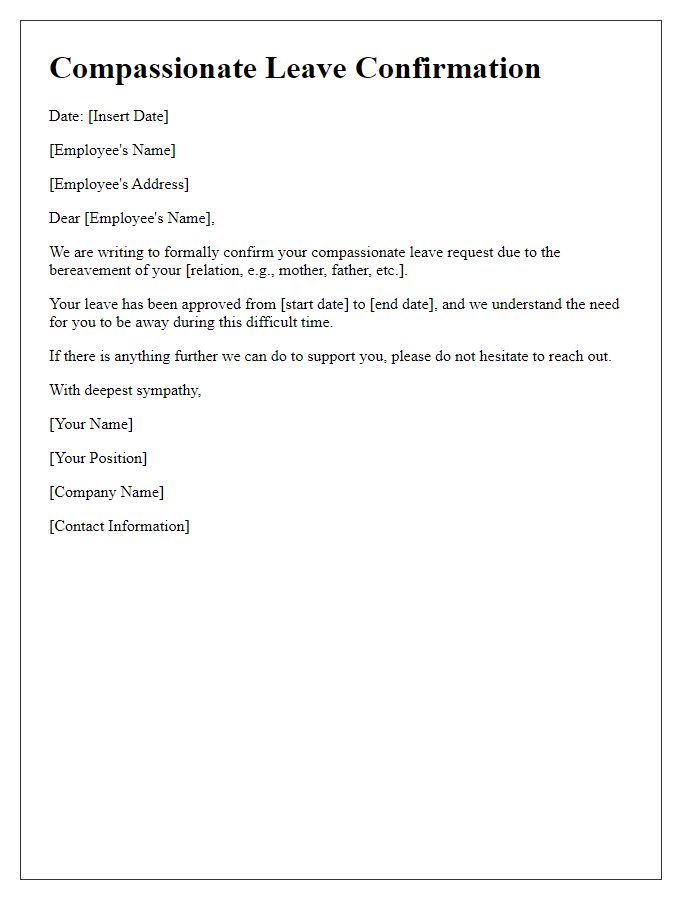
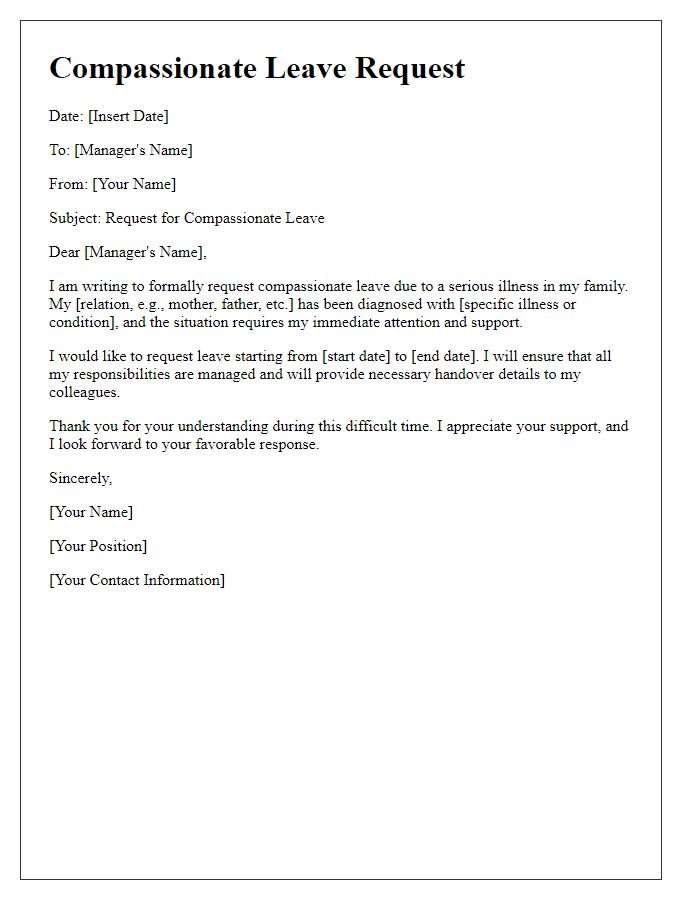


Comments